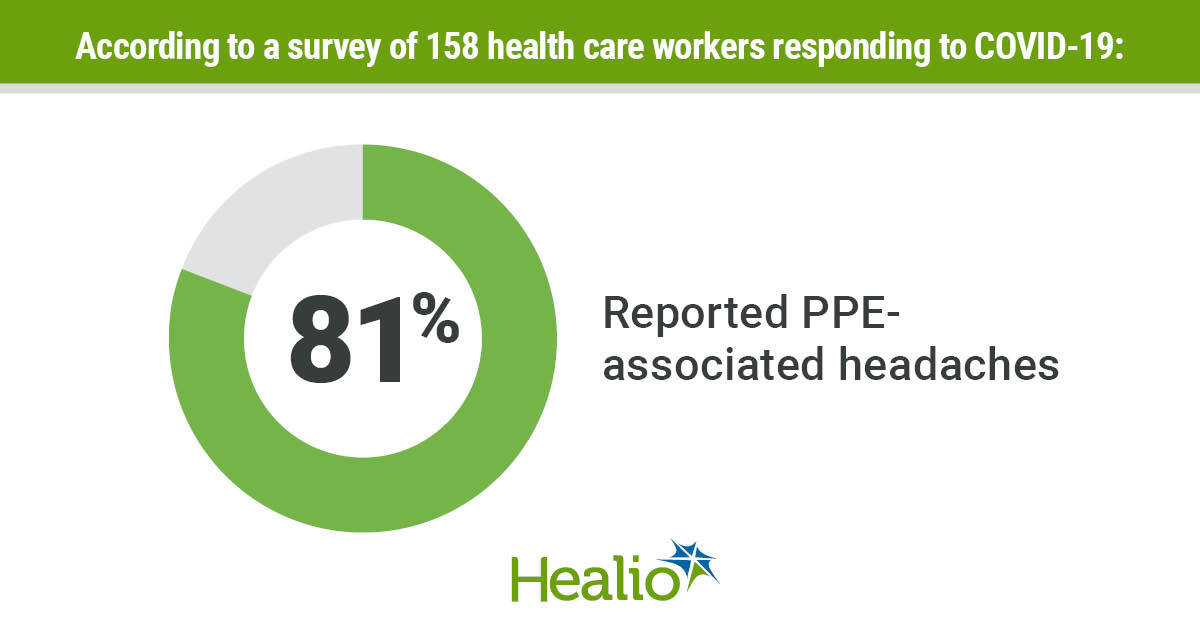PPE-associated headaches increase among health care workers amid COVID-19
Prolonged use of personal protective equipment during the COVID-19 pandemic such as N95 masks and protective eyewear was shown to cause or exacerbate headache among health care workers in Singapore.
The first case of COVID-19 in Singapore was reported on Jan. 23, followed by rapid escalation of cases, according to Jonathan Jia Yuan Ong, MBBS, MMed, FAMS, FRCP, consultant in the division of neurology at the National University Hospital in Singapore, and colleagues. Front-line health care workers were mandated to wear personal protective equipment (PPE) in high-risk areas, including EDs, isolation wards and ICUs. Ong and colleagues investigated the correlation between prolonged use of this equipment and headache during the HAPPE study.
Nurses, physicians and paramedical personnel (n = 158) at the National University Hospital answered a questionnaire assessing headache disorders. On average, they wore the N95 mask and protective eyewear for 6 hours per day. De novo PPE-associated headaches were reported by 128 respondents (81%) and were mainly located in the areas of contact from the face mask or goggles and their head straps. Headache intensity was graded as mild by 71.9% of respondents while 23.4% experienced associated migraine-like symptoms such as nausea, vomiting, photophobia, phonophobia, movement sensitivity and neck discomfort. The onset of pain was within 1 hour of wearing PPE and spontaneous resolution occurred in most cases within 1 hour from removal of the equipment. Most respondents (68.8%) did not use acute analgesic treatment.
Participants with preexisting primary headache diagnosis (29.1%) were more likely to develop de novo PPE-associated headaches. They reported that increased PPE use aggravated their background headaches in addition to other possible contributing factors such as sleep deprivation, stress, irregular mealtimes and inadequate hydration. In this group, more frequent use of acute medication was reported.

Pressure on the head and tractional forces from the mask and goggles are likely to be the main cause of PPE-associated headaches, according to Ong and colleagues.
“The peripheral sensitization may activate the trigeminocervical complex through nociceptive information transmitted via different branches of the trigeminal nerve through the trigeminal ganglia and brainstem to the higher cortical areas, thereby triggering the headache attack,” they wrote.
PPE also causes thermal discomfort, moisture accumulation and difficulty breathing, which likely serve as additional triggers, the researchers added.
“The magnitude of this condition is clinically significant and might worsen if the current outbreak spreads widely and stays for a longer time, affecting the work performance of health care workers. Perhaps, better strategies are needed for designing various personal protective equipment and reducing their exposure time by health care workers,” they wrote. – by Michela Cimberle
Disclosures: The authors report no relevant financial disclosures.

